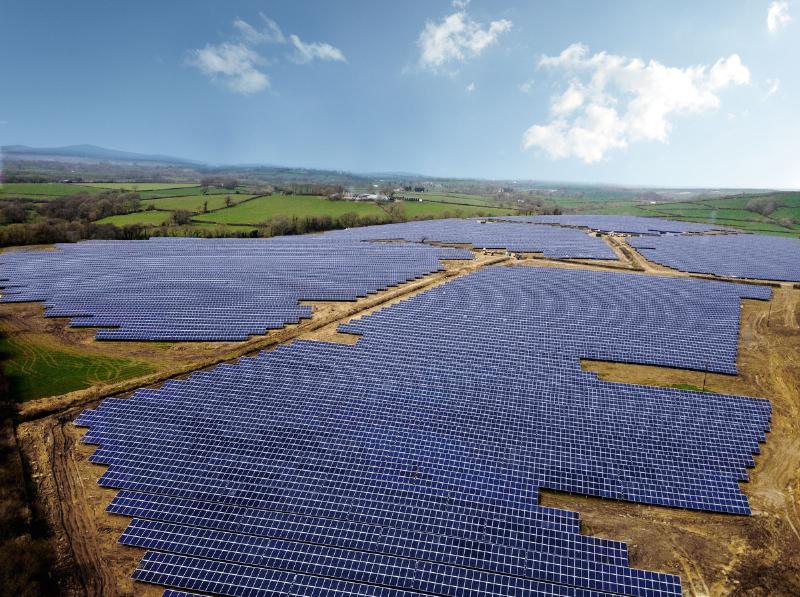
UK solar met 23.9% of electricity demand in early June following a period of rapid installation activity earlier this year. Image: BayWa r.e.
UK solar has continued to break records after generation reached a new peak of delivering almost a quarter of electricity demand.
The data was released by the Solar Trade Association (STA) alongside MyGridGB as part of its third ‘Solar Independence Day’ being held today (Monday 4 July) and claims that 23.9% of demand was met by solar energy early last month.
According to Sheffield Solar, which records PV generation across the UK in an effort to help National Grid keep track of intermittent energy sources, solar generated 61.7GWh on Monday 6 June. This was the second highest day of solar generation after 4 May, when 62.6GWh was achieved.
Installed solar capacity in the UK is thought to have reached almost 12GW after Solar Intel revealed last month that 1.553GW was installed in Q1 2016. Much of this has come through utility-scale solar farms, which were being rushed to completion by the 31 March when the 1.3ROC rate under the Renewables Obligation was closed.
Residential deployment has stalled since the government enacted its subsidy reset earlier this year, but the STA estimates there are currently just over 800,000 homes with solar PV and 200,000 with solar thermal, meaning the UK now has just over 1 million solar homes.
Paul Barwell, chief executive of the STA, said: “The UK has successfully deployed almost 12GW of solar across the UK, providing nearly 25% during peak generation. This is what the country and the world needs to decarbonise the energy sector at the lowest price to the consumer. The Government’s adoption of the fifth carbon budget is a good long-term signal in this regard.”
The budget, which was accepted by energy secretary Amber Rudd last week, has been set at 1,725MtCO2e for the period 2028-2032. This is representative of a 57% cut in emissions compared to a 1990 base level and the Committee on Climate Change has estimated that as much as 40GW of solar could be added by 2030 to help achieve this goal.
“
The UK has successfully deployed almost 12GW of solar across the UK, providing nearly 25% during peak generation. This is what the country and the world needs to decarbonise the energy sector at the lowest price to the consumer – Paul Barwell, chief executive of the STA.
Raising standards
However, following a reduction in central government support for solar deployment, many solar developers are looking to increase their operation and maintenance (O&M) services to cater for the installations already in place.
As part of its Solar Independence Day celebrations, the STA has launched a new initiative to raise standards in the maintenance of big rooftop and ground mount solar systems.
The body wants to ensure that the sector goes beyond minimum standards and establishes best practice to raise the bar in this sector, and is today launching its new initiative, Raising Standards in Solar PV Operations and Maintenance.
Mark Turner, chair of the STA O&M working group and managing director of Lightsource Renewable Energy, said: “With this initiative we want to raise standards and establish best practice across the UK in solar PV operations and maintenance, making sure people are aware that preventative action can avoid costly corrective action later. Solar PV plants have no moving parts but are power plants like any other, and therefore safety has to be our primary concern.”
In addition to these efforts, STA has also been taking stock of the current state of employment in the UK solar sector, with its findings expected shortly. Solar Power Portal has also been working to provide visibility on the active players in the market and is calling on all businesses installing solar, storage, efficiency measures or other clean energy solutions to get in touch.
To help grow an accurate picture of the scale of the solar market as it currently stands, fill out this short form and you will be entered into a prize draw for to win a Kindle Fire.

